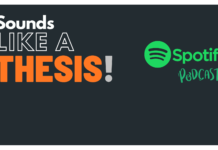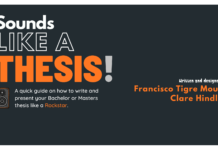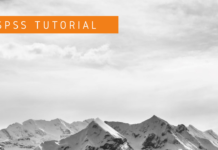Let me guess: You know what you will write about, you have mastered Chapter 1 (Introduction) but you don’t know how to move forward with your Chapter 2 (literature review)?
Alright, alright… I feel your pain. But that’s why I’ve written down some recommendations that hopefully will be useful for you!
INITIAL WARNING
Look, I need to be honest with you here. Writing your theoretical background will not be the most entertaining thing you have done in your life.
Writing a theoretical background is definitely not like sitting under the sun on a tropical beach with the sea water washing your feet exactly when the waiter comes to serve you with a dish of fresh fried fish and a bucket filled with extremely cold beer while your gorgeous smiley girlfriend (wearing a bikini) is singing beautifully “God Only Knows” (Best Beach Boys song). If you don’t know the band or the song, shame on you!) and this is only the first day of vacation.
Writing a literature review is more like going to your City Hall at 7.30am on a hot summer Monday and standing in line for 2 hours at an old building with no AC to pay your taxes to an impolite government employee.
Is it fun? NO. Do you have any choice? NO. And is it important? VERY.
Summing up: Head down, take a deep breath and get it done with!
So how do you do it? SIMPLE. I suggest you do the following:
1. FIRST OF ALL: In this chapter you will discuss only LITERATURE (theoretical concepts) related to your topic.
What does that mean? Assume you want to understand the buying criteria of consumers in regards to Smartphones. Assume this is the title of your Thesis: “Understanding Consumers’ Evaluation of Cellphone Attributes during Their Purchase Decision Making Process”.
In this chapter you will NOT discuss cellphones in specific! (e.g. Describe types, brands, etc). This is simply your CONTEXT. In this chapter you will discuss THEORY (applied to your context!).
FOR EXAMPLE: In this case, you could discuss the following topics:
- Decision Making Process (BROAD TOPIC)
- Product Value Perception
- Consumer Motivation and Involvement
3.1 Consumer Involvement with Electronic Products
- Attribute Evaluation
4.1 Fischbein’s Theory: Multi-attribute Model
- Smartphone Attribute Evaluation (SPECIFIC TOPIC)
- Research Gap
6.1 Research Aim/Question
With this structure did we discuss types of cellphones or their brands? NO! Again, NO! There are only THEORETICAL concepts listed and related to the context of the study!
Also, did you notice that the list goes from the BROADEST (most general) topic to the MOST SPECIFIC topic?
Exactly! That’s the second recommendation!
Video Support: Literature Review
In case you are enjoying the article, do not forget to watch the video with further support on how to write the literature review in your thesis.
2. SECOND OF ALL: Structure the SCOPE of your study.
Think of your theoretical background (or Literature review) as a FUNNEL. Yup, you heard it. A FUNNEL! You must structure it so that you can cover it from the broadest topic until the most specific!
Now here it is difficult for me to help because this is very topic specific. So use your imagination and please try to envision the figure below as if it was a FUNNEL.
(I know it has nothing to do with a funnel but that’s the maximum I could manage, so don’t judge my funnel development skills!).
But HOW do you know how to structure your concepts from the broadest to the most specific? This depends on EACH project. So, sorry but I can’t help you with this.
Discuss it with your SUPERVISOR! I’m just a friend trying to help!
3. THIRD OF ALL: Conclude the chapter by presenting your RESEARCH GAP and RESEARCH QUESTION (or Aim).
The theoretical background should BROADLY enable the reader to do the following:
- Become familiar with the main topics related to your study (So that he/she can understand what you have developed!)
- Understand the logic of how you got to your research question or research aim (depends how you framed it!).
Thus, I recommend you to CONCLUDE your theoretical background by discussing your research GAP and your RESEARCH question.
- RESEARCH GAP
In this section you will generally summarize the topics discussed before and highlight what needs to be researched in your field (the RESEARCH GAP you have identified!)
- RESEARCH AIM/QUESTION
In this sub-section you will remind the reader what your research aim is. Or you may have framed the aim into a research question and will present it here.
Basically, the reader has to read your RESEARCH GAP section and think: “OHHH… Now I get it how all concepts CONNECT to each other and what you are trying to investigate”!
4. FOURTH OF ALL: Use RELIABLE sources and WISELY!
A) Use almost ONLY scientific articles to describe concepts and previous studies! And why
- Scientific articles are peer reviewed, thus credible sources! (Generally speaking, I know).
- Check HERE to see their ranking and use HIGH ranked journals!
B) DO NOT use commercial websites to describe concepts!
- BBC, CNN and others are not scientific sources! But what if they mention a study? Then remember: ALWAYS LOOK FOR THE PRIMARY SOURCE OF SECONDARY DATA!
C) Avoid OVERUSING the same author to explain a concept.
Have you used the same source three times or more on the same page or section?
- If so, basically you are telling your reader: I am too LAZY to look for other sources so I’m just going to cite this same authors as much as possible. And of course, that is NOT a good sign!
SUMMARY
In general you must have done the following in this chapter:
- In this chapter you have discussed only LITERATURE (theoretical concepts) related to your topic.
- You structured the SCOPE of your study.
- You concluded the chapter by presenting your RESEARCH GAP and RESEARCH QUESTION (or Aim).
- You used only RELIABLE sources and WISELY!
So now that you are DONE with Chapter Two, you can focus on the methodology of the thesis!
(In case you want to thank me later: I like cappuccino and Formula 1).
DOWNLOAD THE RECOMMENDATIONS
Did you like this article? Would like to have these recommendations with you while studying?
GREAT! Simply download the file here with all details: LiveInnovation.org - Developing a Theoretical Background Literature Review of a Thesis.pdf
In case you would like to have more research suggestions, check our research resources section.






